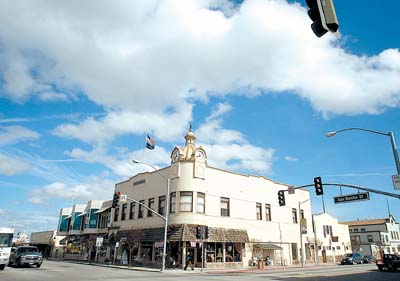A construction project that was put on hold by San Benito County
Board of Supervisors on Tuesday should not stall the $675,000
realignment of Cienega Road.
Concerned about conserving the county’s scarce resources, the
Board temporarily shelved a $40,000 proposal to build a low-water
crossing that would provide residents access to Cienega Road during
the spring and summer months.
A construction project that was put on hold by San Benito County Board of Supervisors on Tuesday should not stall the $675,000 realignment of Cienega Road.
Concerned about conserving the county’s scarce resources, the Board temporarily shelved a $40,000 proposal to build a low-water crossing that would provide residents access to Cienega Road during the spring and summer months.
Supervisor Reb Monaco said, in principle, he could support the idea of installing the crossing to give residents another means of access to and from their homes. His problem was the wisdom of paying close to $40,000 to install the crossing only to have to take it apart in two months. The State Department of Fish and Game will not allow the county to place the crossing in the bottom of the San Benito River during the rainy winter months from Oct. 15 to May 15 because it might disturb the natural habitat of fish that need to use the riverbed.
“Right now, to spend $25,000 to $40,000 to put something in that we will only have to take apart in two months doesn’t sound good to me,” Monaco said. “We can postpone it until May and get a whole summer’s use out of it.”
Public Works Director Doug Koenig agreed with Monaco, pointing out the county will have to install low-water crossings during the spring and summer until the county can afford to build a permanent 900-foot long bridge above the river.
“Caltrans said they would pay 80 percent of the cost for the bridge,” Koenig said.
However, with the county already strapped for funds, Monaco said there was no way it could afford to come up with the cost of the remaining 20 percent.
The planned realignment of Cienega Road is intended to complement the expansion of Hollister Hills State Vehicular Recreation Area.
“This should not affect the realignment at all,” Monaco said.
The realignment was originally projected to cost between $1.5 million and $2 million, however, Koenig said public works could reduce the cost to approximately $675,000 by doing the bulk of the road construction work itself.
The county has been planning to realign Cienega Road at the Hospital Road intersection for approximately 12 years. The realignment would alter the intersection farther south into a gentle curve connecting at Hollister Hill’s main entrance.
The realignment is part of a plan that was approved earlier for expanding the Spark’s area of Hollister Hills into a 3,200-acre area north onto the Renz and Hudner ranches.
In 1992, the county and the state entered into an agreement in which the state would pay the $150,000 for initial traffic impact to the roadway. In addition, the state has agreed to pay a minimum of $6,000 a year for future road maintenance and upkeep of the road.
The Environmental Impact Report for the planned expansion calls for the creation of an 1,100-acre “buffer zone” between the SVRA and neighboring ranches.
Opponents of the plan said 1,100 acres is not enough room to protect them from the noise and dust kicked up by off-road vehicles.
Hollister Hills is located about eight miles south of Hollister. The park is divided into several areas, including: The Lower Ranch, the Upper Ranch and the Hudner and Renz Acquisitions.
The Upper and Lower Ranches are made up of two distinct areas. The 2,400-acre Lower Ranch is the larger of the two areas and consists of two rectangular sections, 700 acres and 1,700 acres in size. The two areas are divided from each other by the San Andreas Fault. The Lower Ranch is primarily devoted to motorcycle and all-terrain vehicle use.
The 870-acre Upper Ranch is about 1,500 feet southeast of the larger Lower Ranch property.
The main portion of the Upper Ranch is devoted to recreational use by four-wheel-drive vehicles. Special motorcycle events are sometimes scheduled in this area. A separate portion of the Upper Ranch is the site of the Grand Prix motorcycle track.
Hollister Hills became part of the State Parks system in October 1975. In September 1976, the California State Parks and Recreation Commission classified the unit as a State Vehicular Recreation Area and the Hollister Hills General Plan was approved in August of 1978.








